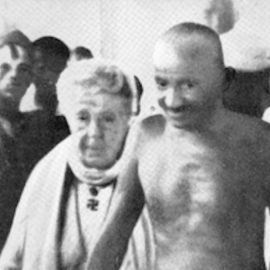

This article is an excerpt from the Shortform book guide to "The Language Instinct" by Steven Pinker. Shortform has the world's best summaries and analyses of books you should be reading.
Like this article? Sign up for a free trial here.
What’s pidgin? Why and how does it come about? What’s a creole?
Steven Pinker contends that language is biologically innate. The innatist theory provides a key insight into the field of linguistics: It explains the ability of people to spontaneously create new languages. Pinker uses pidgin as an example to illustrate this ability.
Keep reading to learn the origin of pidgin and what it tells us about human abilities.
The Origin of Pidgin
Pinker writes that children not only acquire languages easily but that people also naturally create full-blown languages when they’re raised without one. Pinker explains this concept using examples of communities that speak a pidgin: a simplified mashup of multiple languages that occurs when adults form a community without a common language.
So, what’s the origin of pidgin? Pidgins historically formed when groups of immigrants or enslaved people from different places were put together, and they attempted to communicate with each other. Pidgins mix together words from different languages, and they don’t have grammar. Without syntax to dictate sentence order or relationships between words, people struggle to convey nuances like tense or possession when speaking in pidgins.
(Shortform note: Pidgin vocabularies are primarily influenced by the dominant language in a physical location. Hawaii illustrates an example where two distinct pidgins formed based on what language was most common at the time. In the 19th century, indentured laborers from many nations—including China, Japan, the Philippines, Portugal, and Korea—worked alongside native Hawaiians on plantations owned by North Americans. At this time, a pidgin was formed that was primarily based on Hawaiian vocabulary words. Later, as the Hawaiian population declined due to foreign diseases, and as more English-speaking people colonized the islands, a new English-based pidgin formed.)
Children raised in a pidgin-speaking community spontaneously create a new, complex, and precise grammar system: a “creole.” Pinker writes that deaf children raised around a simple signing pidgin do the same, developing advanced sign languages.
(Shortform note: Today, there are about 100 different creole languages, but many of them are endangered due to the decreasing number of young people learning creole languages at home. Most children from creole-speaking families learn a more dominant language (like English, French, or Spanish) in school, and the global economy encourages more people to learn non-creole languages that will prepare them for the workforce. One exception is Haiti, where both French and Haitian Creole are official languages. In Haiti, 90-95% of the population speaks only Haitian Creole.)

———End of Preview———
Like what you just read? Read the rest of the world's best book summary and analysis of Steven Pinker's "The Language Instinct" at Shortform.
Here's what you'll find in our full The Language Instinct summary:
- How language is an innate ability—not an element of culture
- A look at unique qualities of human language
- How slang enhances a language, rather than diminishing it






